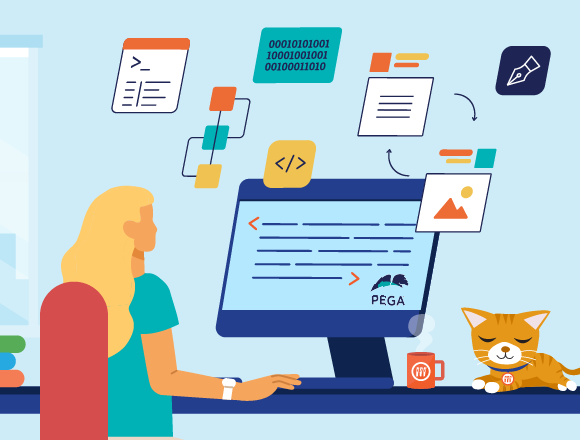
December 9, 2023
Getting Started with Pega: A Beginners Guide
Pega is a robust and versatile business process management (BPM) and customer relationship management (CRM) software that allows organizations to streamline their operations and enhance customer experiences. If you’re new to Pega and looking to get started, this beginner’s guide will provide you with a comprehensive overview and essential steps to begin your journey with this powerful platform.
Understanding Pega:
Pega is a platform that enables the development of business applications without the need for traditional coding. It uses a visual interface and rule-based architecture, allowing users to create, manage, and deploy applications with relative ease.
Pega is a platform that enables the development of business applications without the need for traditional coding. It uses a visual interface and rule-based architecture, allowing users to create, manage, and deploy applications with relative ease.
Steps to Get Started with Pega:
1. Familiarize Yourself with Pega:
1. Familiarize Yourself with Pega:
- Begin by visiting the official Pega website to understand the core features, benefits, and use cases of the platform.
2. Explore Pega Academy:
- Pega offers free training through Pega Academy, where you can access various courses and tutorials. Sign up and take advantage of the available resources to learn the fundamentals.
3. Download and Install Pega Personal Edition:
- Visit the Pega Community and download the Pega Personal Edition. This version allows you to set up a local environment for hands-on practice.
4. Complete Online Courses:
- Enroll in online courses specific to your areas of interest within Pega, such as process automation, case management, or user interface design. Websites like Udemy, Coursera, and LinkedIn Learning offer valuable courses.
5. Join the Pega Community:
- Engage with the Pega Community to ask questions, participate in discussions, and learn from other Pega enthusiasts and experts.
6. Read Documentation and Guides:
- Access the official Pega documentation and user guides to deepen your understanding of the platform’s functionalities and best practices.
7. Experiment and Build Simple Applications:
- Utilize the Pega Personal Edition to experiment and create basic applications. Apply what you’ve learned from the training and courses to gain hands-on experience.
8. Participate in Workshops and Webinars:
- Look out for workshops and webinars organized by Pega or its partners. These events provide insights into real-world implementations and expert guidance.
9. Network and Connect:
- Attend Pega-related meetups or networking events to connect with professionals in the field. Building a network can open up opportunities for collaboration and further learning.
10. Consider Pega Certification:
- Once you have gained a solid understanding and hands-on experience, consider pursuing Pega certifications to validate your skills and enhance your professional profile.
Embarking on your journey with Pega may initially seem daunting, but with the right approach and resources, you can quickly grasp the basics and start building powerful business applications. Remember to continuously engage with the Pega community, stay updated on the latest developments, and leverage the various learning opportunities available to you. Happy learning and creating with Pega!













